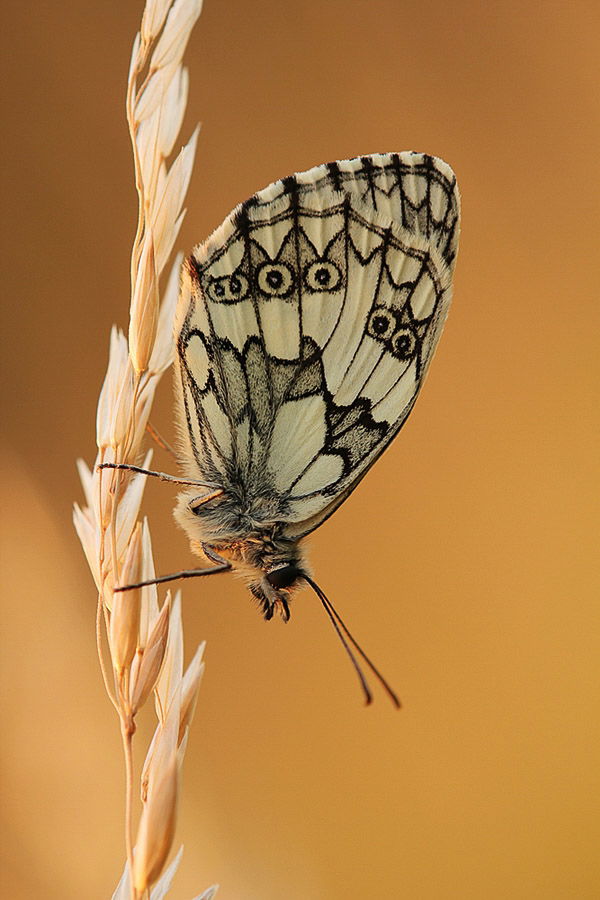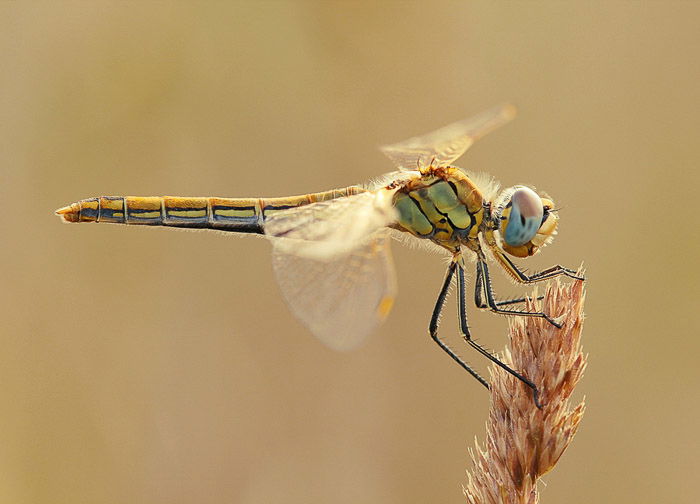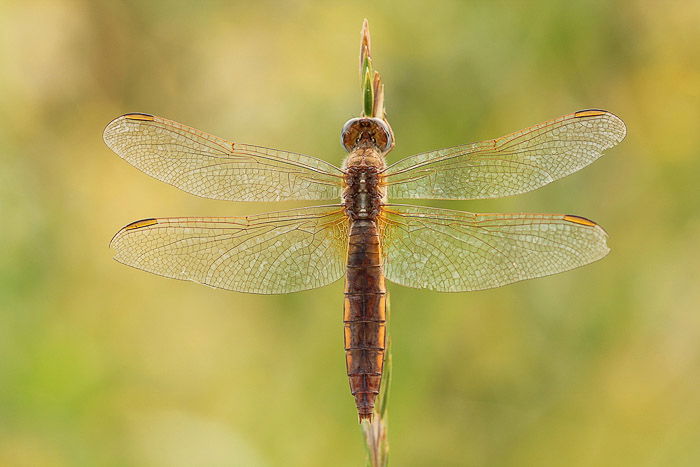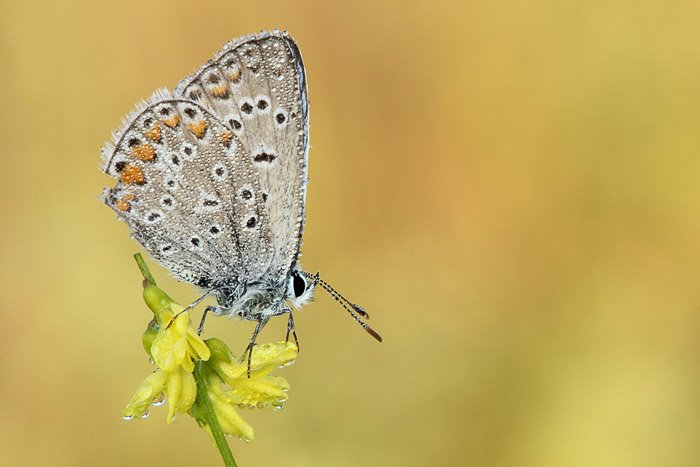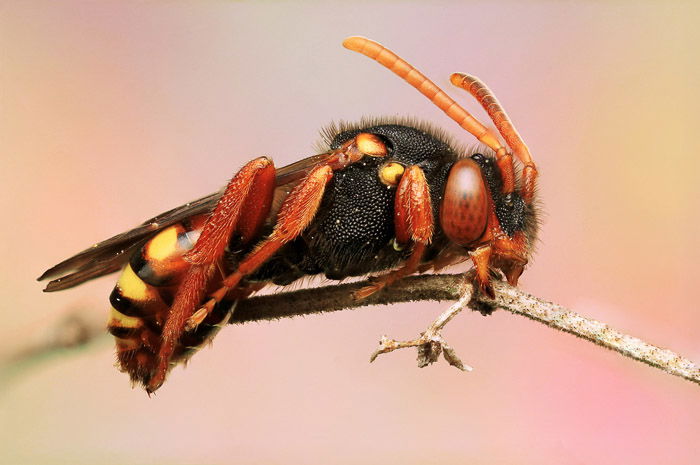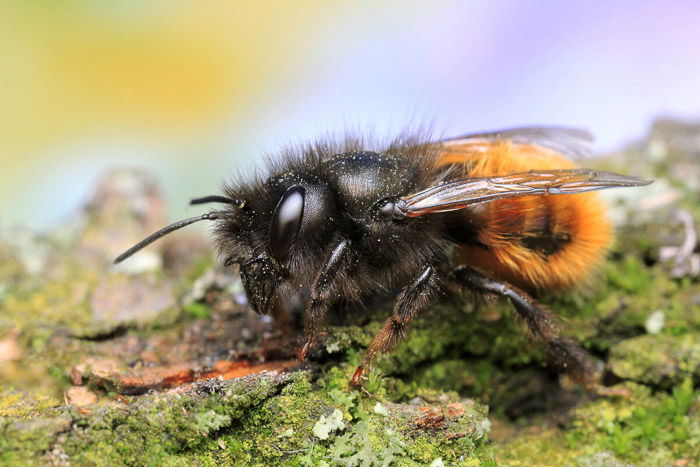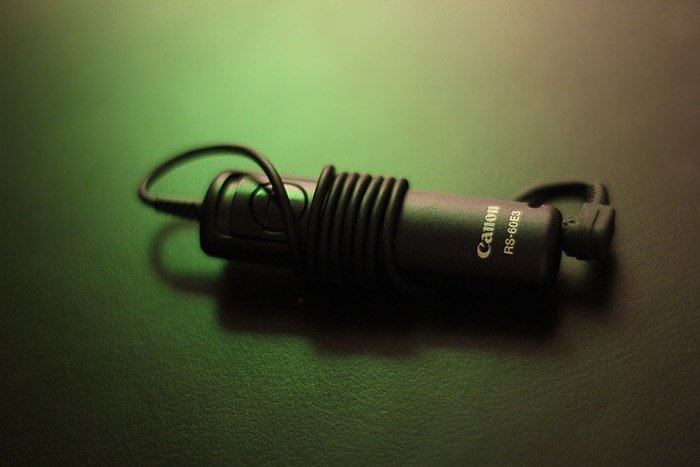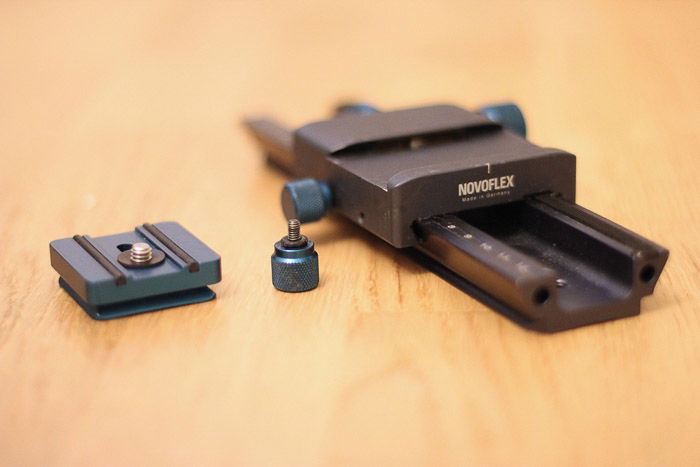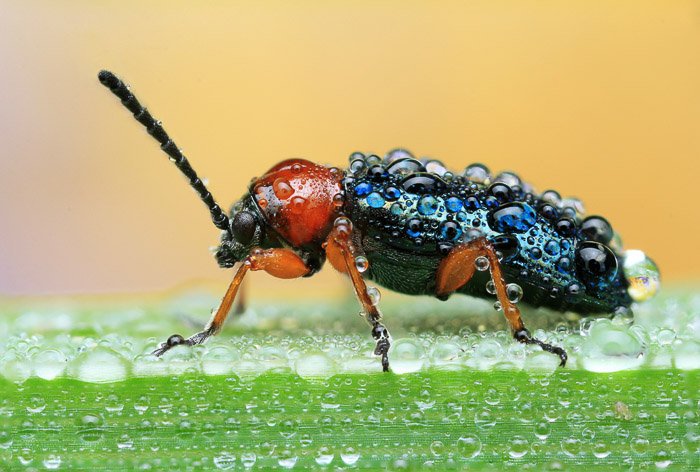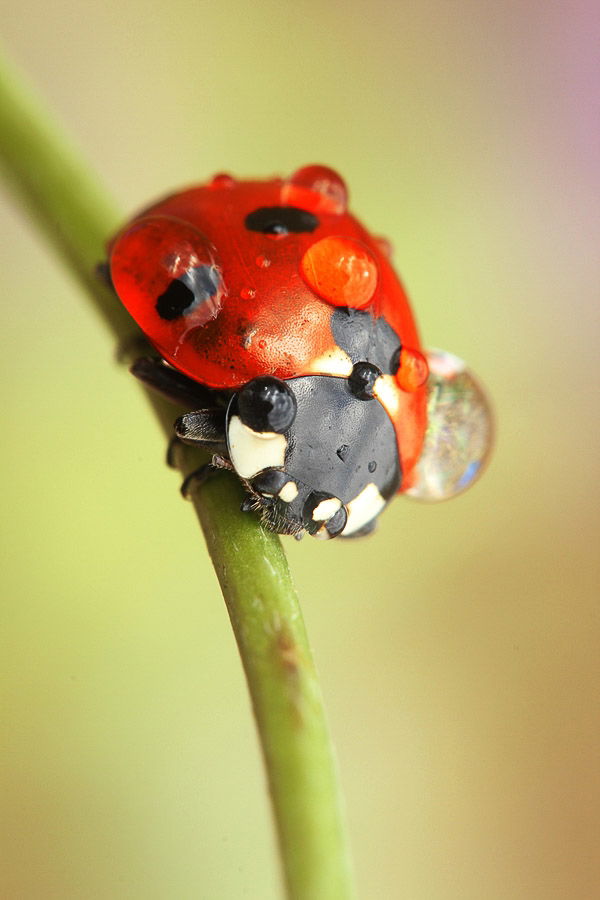Trying out insect photography will be like discovering a whole new world. Not to mention how easy it is to find them in nearly all environments. In the woods, fields, at a lake, at a swamp, in our homes, in the garden, at streams, at ponds, the list can go on forever. You just have to watch closely. For example, dead trees can be full of life. You can find different types of beetles and various other insects hidden among the leaves. The most difficult part is to spot the tiny little animals and to get them in focus. Most insects are skittish. This post will teach you what you need for great insect photography. A heavy dose of patience is a must-have, but so are the right equipment and the know-how to get brilliant shots. [ExpertPhotography is supported by readers. Product links on ExpertPhotography are referral links. If you use one of these and buy something, we make a little bit of money. Need more info? See how it all works here.]
Insect Photography: What Is the Best Time to Photograph Insects?
Mornings
The best time to photograph insects is probably in the mornings. The temperatures are low and the insects are still asleep and less active. It is harder for them to move if it’s cold which means you can take the best possible photo of that insect. After a cold night in the spring, you will find thousands of dew-drops on the insects. This will add a nice extra to your macro shot. With the insects still waking up, you will have enough time to shoot tons of images. It is the perfect opportunity to practice your macro skills. The lighting conditions are not ideal, but I would recommend getting out before the sun rises. Like this, you’ll have plenty of time to find the insects and also to set up your camera. Another great advantage of photographing insects in the morning is that the light is probably the best you can have.
Daytime
In my experience, photographing insects during the day is the worst time to choose. That’s when insects are most active and this will make it difficult to approach them. Most insects depend on the surrounding temperature to regulate their own body temperature. They need hot temperatures to be active. If you want to photograph them during the day, wait for a cloudy one, when it’s a little chilly outside. Autumn and spring are better for daytime insect photography. It’s usually cold and humid, and the temperatures are low.
Evenings
Early and late evenings after the sun has set and temperatures have gone down are also a good time to photograph insects. This is when the insects start resting. You also have magical light and beautiful colors, due to the golden hour. Another reason to photograph insects when they’re resting is so you can use different perspectives and angles. Once the insects have settled down on a plant, they will stay there for the whole night. I would definitely recommend marking the plant where they rest. It will be much easier for you to find the insect the next morning and continue photographing it.
Respect the Insects
I have seen photographers use various methods to freeze uncooperative insects to slow them down in order to get clear and sharp images. That’s definitely not how you should do it. Never harm the insect you are photographing – always choose patience-based techniques. Believe me, you will be rewarded for your patience. Get up early and photograph the insects when they are lethargic and cooled down by the early-morning temperatures, not by a freeze spray. Each life, no matter how small, should be respected.
Best Insects to Photograph
Dragonflies
There are more than five thousand species of dragonflies living on this planet. This amazing insect has the ability to fly straight up and down, to hover like a humming-bird and to catch their prey while flying. That’s fantastic for action shots if you try to photograph them in flight. Like most insects, dragonflies are active when the sun is shining. You could also approach them while they eat. They are usually less sensitive for some reasons when they have lunch. You can usually find dragonflies near bodies of water, like lakes, ponds, streams, and wetlands. Dragonflies need water to lay their eggs in so they never stray too far from a source of it. If you have a pond, a stream or a lake nearby, you should definitely grab your camera and go find some dragonflies.
Butterflies
Their beautiful wing patterns make butterflies probably the most photogenic insect there is. You can find all over the world and they’re most active during the warm months of the year between spring and summer. They love sunny places and areas with wildflowers. Just take a walk and watch out for a flower field. You will be surprised by how many different butterfly species you will find.
Bees
There are actually around 25,000 known species of bees and they can be found all over the world. If you have troubles locating bees, a wonderful way would be to place a bee hotel or house on your balcony or in your garden. Bee hotels provide a nesting location and offer protection from cold weather, and bees and insects can also use it for hibernation. Bees are also important for our environment because they pollinate flowers and provide food sources to us humans. They’re also really photogenic!
Equipment for Insect Photography
Macro Lens
Macro lenses offer different focal lengths from wide-angle to telephoto, ranging from 15mm to 200mm. For insect photography, I would recommend choosing a macro lens with at least 90mm. There should be enough space between you and the insect to not scare them off. When I started with insect macro photography I had a Canon 60mm f2.8. I quickly realized it was a bad idea not investing in a macro lens with more focal lengths. The insects kept running away every time I tried to approach them. The compound eyes of insects consist of thousands of tiny eyes called facets. Their eyes allow them to spot and react very quickly to fast movements. The more working distance you have, the lower the chances you’ll scare them off. In case you already own a macro lens with less than 90mm and don’t want to buy a new one, try using teleconverters. These can extend the focal lengths of your lens and also allow you to isolate the insect from the background. Like this, you will have a less busy background. Let’s take this example. If you are using a full frame camera and shoot with a 50mm macro prime lens, the working distance between you and the insect would be about 8 inches. With a 180mm macro prime lens, you will have about 18 inches of working distance. That’s a huge difference and is often very useful when taking pictures of insects. For insect photography with regular magnification, take a look at the following lenses:
Canon EF 100mm f/2.8 Macro USM Tamron SP AF 180mm 3.5 Di LD IF Sigma 150mm F2.8 APO Macro EX DG OS HSM
For photographers who use Nikon DSLR cameras, I would recommend:
Nikon 105mm Micro-Nikkor Lens TAMRON SP 90mm F/2.8 Di Macro Sigma 105mm F2.8
Remote Shutter Release
It can be quite challenging to get sharp results when taking images at high magnifications. A remote shutter release will minimize camera motion and let you receive much sharper results. The slightest camera movement can result in a blurred image. But this tiny gadget will instantly increase the quality of your insect macro shots. It’s definitely a must for every macro photographer. If you are shooting with Canon the Canon RS-60ES does a very solid job, you just plug it in your camera and you can start shooting. It doesn’t even need any battery and it’s very affordable, only around $5-$15. For Nikon, I would recommend using the Nikon 25395 MC-DC2 remote release.
Tripod
The main reason for using a tripod is to avoid camera shake during exposure. For insect macro photography, it’s also useful when you are really close and the depth of field is shallow. You probably wouldn’t have much success shooting with your camera handheld. There are some tripods on the market that allow you to take low angle shots such as the Manfrotto 190XPRO. You can position your camera as low as you want. This is perfect for insect species who live on the ground such as ants or various beetle species.
Optional Accessories for Getting the Best Insect Shot
Flash
Flashes can help you set a faster shutter speed. You’ll have to make sure to soften the flashlight with a small softbox. A flashlight can often be harsh and may produce unwanted shadows on your subject. A few years ago I made myself a softbox for my external flash and it really helped me to get amazing insect shots. Also, a ring flash can be a great extra light source for insect macro photography. I personally like the SAMTIAN RF-600D LCD Macro Ring Flash. It provides an ultra-bright LED light that comes close to natural light. It needs 4 AA batteries but once you’ve mounted it on the front of your lens, you’re ready to go.
Focusing Rack
For high magnification insect photography, I would definitely recommend using a focusing rack. This will allow you to set the focus where you want to have it. You can also shoot images with various focus points. Later, you can stack these together in Photoshop to increase the depth of field. The Live View mode can be really useful while operating your camera on a focusing rack, as you can zoom in 5 times, 10 times, or more to fine-tune the focus. I have tried various focusing racks over the last couple of years and in my opinion the Novoflex Castel Q is the best one at the moment. It provides a really smooth adjustment of the camera.
Flexible armature with clip
A clip can be really helpful for photographing an insect sitting on a flower. Especially if the wind is too harsh for you to take any sharp images, you will be able to use the clip to hold the flower still. A flexible armature with a clip will allow you to use a long shutter speed as a result. The FMS Field Macro Support and Clamp System is a great option and it’s small enough to fit in any camera bag.
Angle Finder (For Low-Position Shooting)
Looking through the regular viewfinder can be quite difficult when you try to photograph insects on ground-level. An angle finder is perfect for low-position shootings as it allows you to look downwards into the viewfinder. I personally find that the Neewer Perfect Angle Finder performs really well. It has a built-in diopter with 1X and 2X capability and a full 360-degree rotation system. It’s very solid built and will only cost you around $30.
Recommended Camera Settings
ISO
As a golden rule, always keep your ISO as low as possible when taking pictures of insects.
Shutter Speed
Always use the fastest shutter speed possible. If your shutter stays open for as short a time as possible, less movement can happen during the capture of the image. As a result, your image will be sharper. If you take images under very bad light conditions and can’t set the fast shutter speed, try to increase the ISO number of your camera. Experiment with ISO levels, but try to avoid too much grain or noise in your images.
Aperture
Try to set an aperture between f/5.6 and f/11 to maximize the depth of field and capture all the details of the insect. You can also use the image stacking method if you want to maximize the depth of field. If you can’t get the whole body of the insect in focus, just make sure that your focus is set on the eye of the insect. As long as the eyes of the insect are clear and sharp, you don’t have to worry.
Auto-focus
Your auto-focus might not work correctly when taking insect photos. You are at such a close range to the insect that your lens might have trouble finding the focus. In this case, just use manual focus instead.
Final Tips for Photographing Insects
Do not chase the insects – It’s not necessary to chase the insects, let them come to you. Spray some sugar water on a plant and you will be surprised how many insects you will attract. Move slowly – That’s the golden rule when you want to photograph insects. Some insects are more tolerant than others but always move slowly. Absolutely avoid making fast or hectic movements, as that will scare off the bugs. Get there early or late – Insects are less sensitive in the mornings and evenings when they are usually asleep. I would definitely recommend arriving before sunrise or after sunset. Avoid short focal lengths – If you use a lens with a short focal length you will need to get really close. This might frighten them off, so better use a lens with at least a 90mm focal length. If you have problems finding insects in the wild or if you want to practice with your new macro lens, just visit the nearest butterfly house. You will find many different insect species there. If you want to photograph a specific insect species, do some research beforehand and figure out what the closest place where you can find them is. And most importantly, have some fun. Insect photography can lead to some incredible pictures of the world these little creatures live in.




